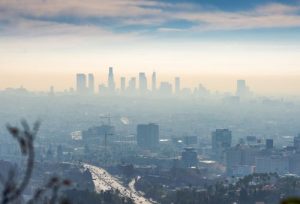Introduction
John Doe, a seasoned urban planner and environmentalist, has spent over two decades studying the intricate dynamics of urban environments and their impact on the people who inhabit them. His expertise lies in understanding the complex relationship between urbanization, environmental health, and human behavior. Today, he shares his insights on the risks and realities of leaving polluted cities.
The Illusion of Greener Pastures
The allure of greener pastures often tempts city dwellers to consider relocation. The thought of escaping the pollution and chaos of city life for a cleaner, quieter environment is indeed appealing. However, this decision is not without its challenges and risks. The perceived benefits of such a move often overshadow the potential downsides, creating an illusion of greener pastures. It’s crucial to understand that every environment, urban or rural, has its unique set of challenges and advantages.
The Economic Impact
Relocating from a city can have significant economic implications. The cost of living, employment opportunities, and real estate values vary greatly between urban and rural areas. For instance, while the cost of living might be lower in rural areas, employment opportunities could be limited. On the other hand, real estate investors might find lucrative opportunities in less polluted areas, but they also need to consider factors like demand, growth potential, and infrastructure development.

Environmental Considerations
The environmental impact of relocation is a critical factor to consider. Moving populations from polluted cities to less polluted areas can strain the resources of the latter, leading to new environmental challenges. For example, increased demand for housing and infrastructure in less polluted areas can lead to deforestation and loss of biodiversity.
The Social Aspect
Relocating involves more than just a change of scenery. It also means adapting to a new social environment, which can be challenging. City dwellers might find the pace of life in less polluted areas slower, and the social dynamics different. It’s important to consider these factors and prepare for the social adjustments required.
Case Studies
Real-life examples provide valuable insights into the risks and realities of leaving polluted cities. For instance, the case of people moving from polluted cities to less polluted rural areas only to face new environmental, economic, and social challenges underscores the importance of thorough research and preparation before making such a decision.
Making an Informed Decision
With the right information at hand, city residents, real estate investors, and environmentalists can make informed decisions about relocation. It’s important to weigh the pros and cons, consider the potential risks and benefits, and prepare for the changes that relocation might bring. Practical tips include researching the destination, understanding its environmental, economic, and social dynamics, and planning for the financial and lifestyle changes that relocation might entail.
Table: Key Points Discussed
| Section | Key Points |
|---|---|
| The Illusion of Greener Pastures | Understanding the reality behind the perceived benefits of leaving polluted cities |
| The Economic Impact | Considering the financial risks and opportunities of relocation |
| Environmental Considerations | Understanding how relocation can lead to new environmental challenges |
| The Social Aspect | Preparing for the social adjustments required when relocating |
| Case Studies | Learning from real-life examples of relocation experiences |
| Making an Informed Decision | Using research and preparation to make informed relocation decisions |
Conclusion
In conclusion, the decision to leave a polluted city is not one to be taken lightly. It involves careful consideration of various factors, including environmental, economic, and social aspects. While the grass might seem greener on the other side, it’s essential to remember that every environment has its unique set of challenges and advantages. Stay informed, stay safe, and make decisions that are in your best interest. Remember, the grass isn’t always greener on the other side.



